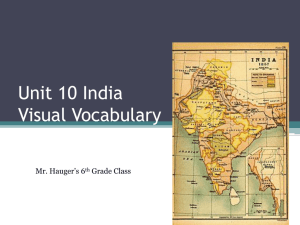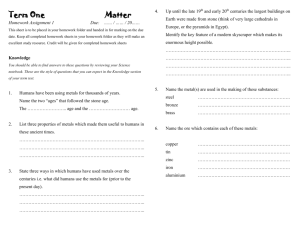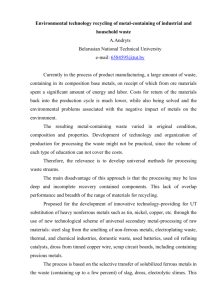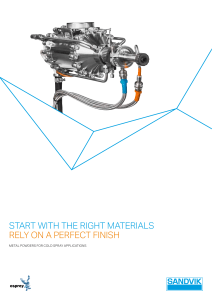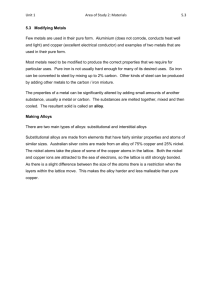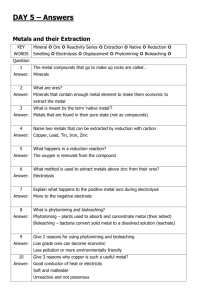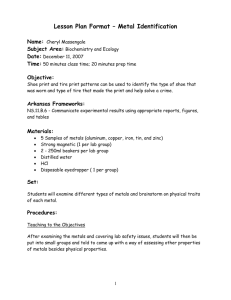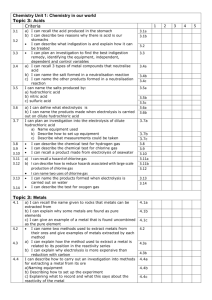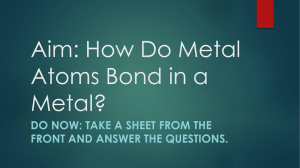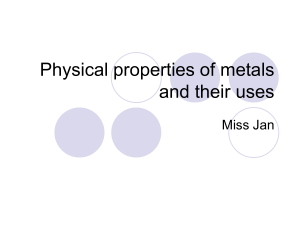un/scetdg/48/inf.42
advertisement
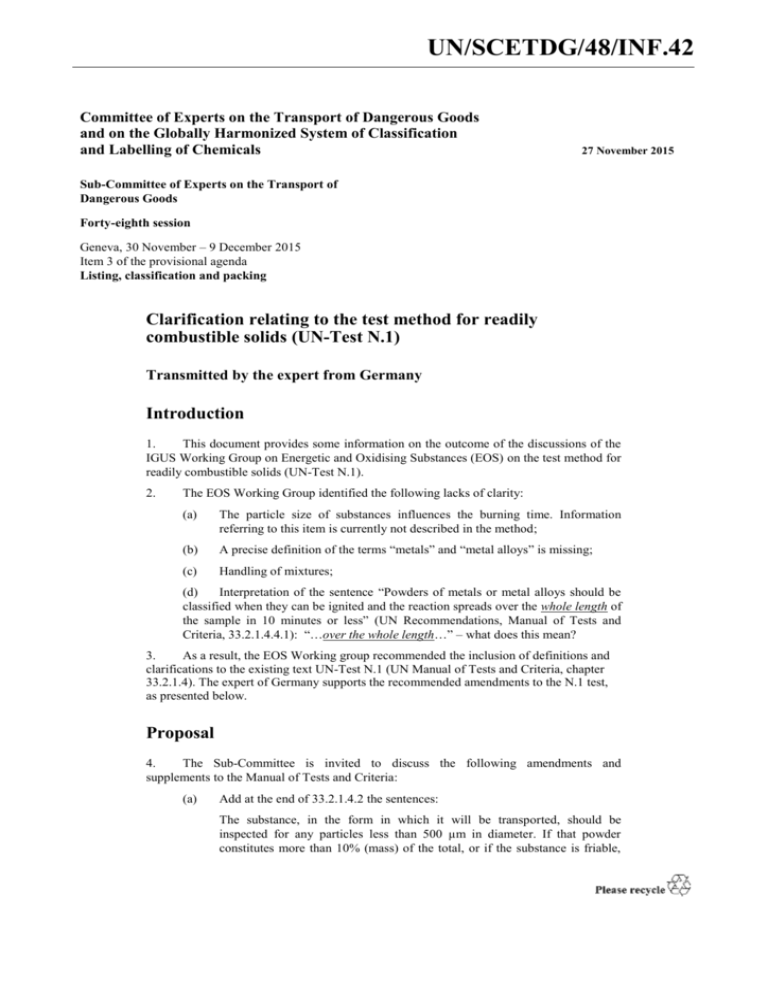
UN/SCETDG/48/INF.42 Committee of Experts on the Transport of Dangerous Goods and on the Globally Harmonized System of Classification and Labelling of Chemicals 27 November 2015 Sub-Committee of Experts on the Transport of Dangerous Goods Forty-eighth session Geneva, 30 November – 9 December 2015 Item 3 of the provisional agenda Listing, classification and packing Clarification relating to the test method for readily combustible solids (UN-Test N.1) Transmitted by the expert from Germany Introduction 1. This document provides some information on the outcome of the discussions of the IGUS Working Group on Energetic and Oxidising Substances (EOS) on the test method for readily combustible solids (UN-Test N.1). 2. The EOS Working Group identified the following lacks of clarity: (a) The particle size of substances influences the burning time. Information referring to this item is currently not described in the method; (b) A precise definition of the terms “metals” and “metal alloys” is missing; (c) Handling of mixtures; (d) Interpretation of the sentence “Powders of metals or metal alloys should be classified when they can be ignited and the reaction spreads over the whole length of the sample in 10 minutes or less” (UN Recommendations, Manual of Tests and Criteria, 33.2.1.4.4.1): “…over the whole length…” – what does this mean? 3. As a result, the EOS Working group recommended the inclusion of definitions and clarifications to the existing text UN-Test N.1 (UN Manual of Tests and Criteria, chapter 33.2.1.4). The expert of Germany supports the recommended amendments to the N.1 test, as presented below. Proposal 4. The Sub-Committee is invited to discuss the following amendments and supplements to the Manual of Tests and Criteria: (a) Add at the end of 33.2.1.4.2 the sentences: The substance, in the form in which it will be transported, should be inspected for any particles less than 500 µm in diameter. If that powder constitutes more than 10% (mass) of the total, or if the substance is friable, UN/SCETDG/48/INF.42 then the whole of the test sample should be ground to a powder < 500 µm before testing to allow for a reduction in particle size during handling and transport. Otherwise, the substances should be tested in its commercial form. Remark: These sentences are already part of the UN Test O.1 and are also appropriate for the UN Test N.1. Consequence: Delete the words “in its commercial form” in sentence 1 of paragraph 33.2.1.4.3.1and in sentence 1 of paragraph 33.2.1.4.3.2. (b) Add the following note in 33.2.1.4.4.1: Note: metal oxides (not in their highest oxidation state) and semi-metals should be assigned to the group of metals and metal alloys. (c) Add a new paragraph 33.2.1.4.4.4: If there are mixtures of metals and substances other than metals (e.g. organic compounds) the main test and the classification for both material groups (metal powders and non-metal powders) should be performed and the most conservative classification should be used. (d) The last sentence of 33.2.1.4.4.1 should be amended to read as follows: Powders of metals or metal alloys should be classified when they can be ignited and the reaction spreads over the whole length (250 mm) of the sample in 10 minutes or less. 5. The experts of the Sub-Committee are invited to consider the information presented in this paper and offer comments. On the basis of the outcome of the discussion the expert from Germany would be willing to prepare a formal paper for the next session of the SubCommittee. 2
